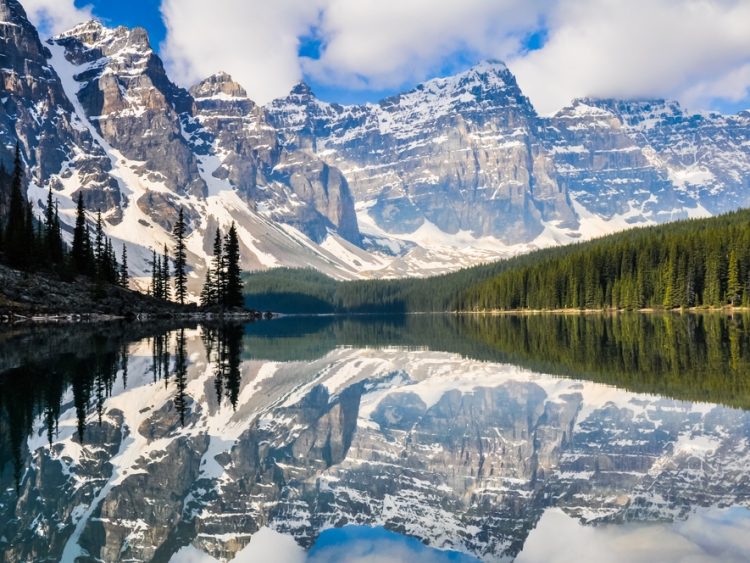The Rocky Mountains, a range of vast and towering peaks that stretch more than 3,000 miles across North America, have long captured the imagination of travelers, nature enthusiasts, and adventurers from all over the world. Whether you’re seeking the tranquility of pristine wilderness, the thrill of outdoor activities, or the beauty of awe-inspiring landscapes, the Rockies offer something for everyone.
But what exactly makes the Rocky Mountains such an essential destination? Why do millions of visitors flock here each year to experience the unique geography, rich biodiversity, and diverse recreational opportunities? What can you expect when you visit, and how can you make the most of your trip to this iconic region?
This guide will provide an in-depth exploration of the Rocky Mountains as a travel destination, covering everything from its breathtaking natural scenery to its outdoor activities, cultural significance, practical travel tips, and the best spots to explore. Whether you’re planning your first visit or seeking more insider knowledge to make your trip unforgettable, this guide will offer everything you need to know about the Rockies.
The Geography and Layout of the Rocky Mountains
Stretching from the northernmost parts of Canada to the southern United States, the Rocky Mountains form one of the longest mountain ranges in the world. They span over 3,000 miles, cutting across Canada’s British Columbia and Alberta provinces, as well as the western United States, including Montana, Wyoming, Colorado, Utah, and New Mexico.
The Subranges and Key Peaks
The Rocky Mountains are not a singular range, but rather a collection of smaller ranges with distinct features. These subranges include:
- The Canadian Rockies (Alberta and British Columbia): Home to dramatic peaks, glaciers, and world-renowned national parks like Banff National Park and Jasper National Park.
- The Front Range (Colorado): The mountains close to Denver and the popular Rocky Mountain National Park, home to several 14,000-foot peaks.
- The Sawatch Range (Colorado): Known for some of the tallest peaks in the state, including Mount Elbert, the highest peak in Colorado.
- The Wind River Range (Wyoming): A remote and rugged section known for its pristine wilderness.
- The San Juan Mountains (Colorado): Famous for their rugged beauty, remote hiking trails, and mining history.
Landforms and Features
The Rockies are home to a variety of dramatic landforms, including towering peaks, deep valleys, crystal-clear lakes, and alpine tundras. Some of the key features include:
- Glaciers: Especially in the Canadian Rockies, glaciers like the Columbia Icefield provide some of the most spectacular sights in the range.
- Alpine Tundra: Above the tree line, the Rockies feature alpine tundra landscapes, where only the hardiest of plants survive.
- Waterfalls: Many national parks, including Rocky Mountain National Park and Banff, are home to stunning waterfalls, such as Alberta Falls and Tanglewood Falls.
- Hot Springs: Regions like Hot Springs Mountain offer relaxing and natural hot spring experiences surrounded by scenic mountain views.
Flora and Fauna: The Rich Ecosystems of the Rockies
The biodiversity of the Rocky Mountains is one of the most impressive aspects of the region, from the towering forests of coniferous trees to the alpine meadows and wetlands. These ecosystems support a wide variety of plant and animal species.
Flora
- Lower Elevations: At lower elevations, visitors will find lush forests dominated by species like Douglas fir, ponderosa pine, and Engelmann spruce.
- Mid-Elevations: The middle slopes are home to a mixture of forests and alpine meadows, with species like lodgepole pine and aspen.
- Alpine Tundra: Above the tree line, the landscape is dominated by low-lying plants, including alpine grasses, wildflowers, and shrubs that are well adapted to the harsh conditions.
Fauna
- Large Mammals: The Rockies are home to large mammals, including bison, elk, black bears, grizzly bears, and mountain lions. These animals can often be spotted in national parks like Yellowstone and Rocky Mountain National Park.
- Birds: The region boasts a wide range of bird species, including Golden Eagles, Peregrine Falcons, and Bald Eagles. Birdwatchers flock to the Rockies for their incredible birdlife diversity.
- Smaller Mammals: The Rockies also provide a habitat for smaller animals like mountain goats, bighorn sheep, pikas, and marmots, which are especially abundant in high-altitude regions.

Outdoor Activities: Adventure Awaits in the Rockies
The Rocky Mountains are a playground for outdoor enthusiasts, offering a wide range of recreational activities. Whether you’re interested in hiking, skiing, rock climbing, or exploring the local wildlife, the Rockies provide ample opportunities to connect with nature.
Hiking and Backpacking
With thousands of miles of hiking trails, the Rockies are a hiker’s dream. There’s something for every skill level:
- Short, Easy Hikes: Trails like Bear Lake and Alberta Falls in Rocky Mountain National Park are perfect for those seeking easy access to stunning landscapes.
- Challenging Trails: For more experienced hikers, trails like Longs Peak and Mount Hood offer incredible challenges and views.
- Backpacking: For those seeking a multi-day wilderness experience, routes such as the Continental Divide Trail offer one of the longest continuous backpacking journeys in North America.
Skiing and Snowboarding
The Rockies are home to some of the world’s best ski resorts, offering incredible powder and a wide range of slopes:
- Aspen: Known for its upscale vibe and top-tier slopes, Aspen is a world-class destination for winter sports.
- Vail: One of the largest ski resorts in North America, Vail offers a huge variety of runs.
- Jackson Hole: Located in Wyoming, Jackson Hole is renowned for its challenging terrain and stunning mountain views.
Rock Climbing and Mountaineering
For those looking to test their limits, the Rockies offer some of the best climbing opportunities in the world. Areas like The Flatirons in Colorado and the Wind River Range in Wyoming provide world-class climbing routes for climbers of all abilities.
Wildlife Watching
Wildlife viewing is one of the main attractions of the Rockies, with abundant species to observe:
- Yellowstone National Park: Famous for its geothermal features, Yellowstone is also home to an incredible diversity of wildlife, including bison, wolves, and bears.
- Banff National Park: Located in Canada, Banff is known for its abundant wildlife, including elk, moose, and mountain goats.
Cultural and Historical Significance
The Rocky Mountains have long been a significant region for Indigenous peoples, explorers, and settlers.
Indigenous Peoples
For thousands of years, the Rockies have been home to various Indigenous tribes, including the Navajo, Ute, Shoshone, and Crow. These tribes lived in the Rockies, depending on the land for hunting, gathering, and spiritual practices. Many of their traditions and customs are still practiced today.
European Exploration and Settlement
European settlers, including explorers like John C. Frémont and Lewis and Clark, were among the first to map the region in the early 19th century. The rugged landscape was a challenge for explorers and settlers, but it also represented opportunity, particularly with the discovery of gold in the Colorado Rockies.
Modern Cultural Influence
The Rockies have inspired artists, writers, and environmentalists. The beauty of the region has been immortalized in paintings by artists like Albert Bierstadt and Thomas Moran, while writers like Edgar Allen Poe and Wallace Stegner have depicted the mountains as symbols of nature’s awe-inspiring power.
Planning Your Trip: Practical Travel Tips for Visiting the Rockies
When planning a trip to the Rocky Mountains, there are several factors to consider to make your visit as enjoyable and safe as possible.
Best Time to Visit
- Summer (June to August): Ideal for hiking, climbing, and outdoor activities.
- Fall (September to October): Perfect for witnessing the changing leaves, especially in areas like Colorado.
- Winter (December to February): Best for skiing and snowboarding.
- Spring (March to May): A quieter time to visit, with fewer crowds and great opportunities for early-season hiking.
How to Get There
The Rocky Mountains are accessible via several major cities, including Denver (Colorado), Salt Lake City (Utah), Bozeman (Montana), and Calgary (Alberta). These cities offer major airports with transportation options to get to various mountain destinations.
Accommodation Options
From rustic cabins to luxury resorts, the Rockies offer a range of accommodation to suit all budgets. National park lodges, private rentals, and campgrounds are all available for booking in advance.
Conclusion: Why Should You Visit the Rockies?
The Rocky Mountains are not just a destination; they are an experience that touches your soul. Whether you come for adventure, relaxation, or simply to witness the magnificence of the natural world, the Rockies will captivate you with their grandeur and diversity. It’s a place where the forces of nature come alive in spectacular ways, and your connection to the wilderness becomes deep and personal.
So, what makes the Rockies an essential destination for every traveler? It’s the chance to reconnect with nature, challenge yourself, and witness some of the most breathtaking scenery the world has to offer.





















